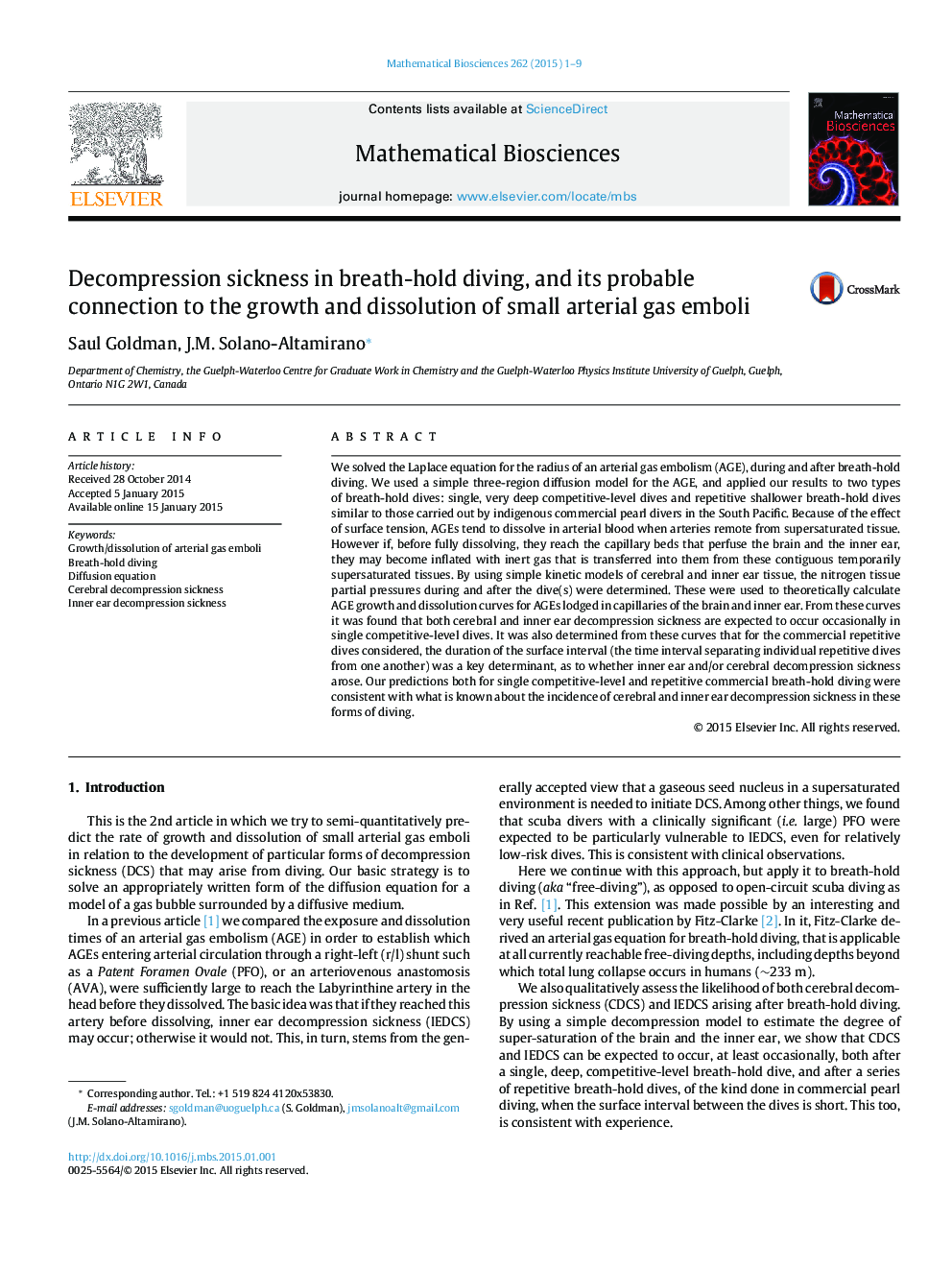| کد مقاله | کد نشریه | سال انتشار | مقاله انگلیسی | نسخه تمام متن |
|---|---|---|---|---|
| 4499975 | 1624018 | 2015 | 9 صفحه PDF | دانلود رایگان |
highlights
• We predict the rate of growth and dissolution of small arterial gas emboli (AGE).
• The work is relevant to decompression sickness in breath-hold diving (BHD).
• Our work is specific to inner ear and cerebral decompression sickness.
• Our results are consistent with what is known about these forms of DCS in BHD.
• A surface interval of 15 min greatly reduces the risk of DCS in repetitive BHD.
We solved the Laplace equation for the radius of an arterial gas embolism (AGE), during and after breath-hold diving. We used a simple three-region diffusion model for the AGE, and applied our results to two types of breath-hold dives: single, very deep competitive-level dives and repetitive shallower breath-hold dives similar to those carried out by indigenous commercial pearl divers in the South Pacific. Because of the effect of surface tension, AGEs tend to dissolve in arterial blood when arteries remote from supersaturated tissue. However if, before fully dissolving, they reach the capillary beds that perfuse the brain and the inner ear, they may become inflated with inert gas that is transferred into them from these contiguous temporarily supersaturated tissues. By using simple kinetic models of cerebral and inner ear tissue, the nitrogen tissue partial pressures during and after the dive(s) were determined. These were used to theoretically calculate AGE growth and dissolution curves for AGEs lodged in capillaries of the brain and inner ear. From these curves it was found that both cerebral and inner ear decompression sickness are expected to occur occasionally in single competitive-level dives. It was also determined from these curves that for the commercial repetitive dives considered, the duration of the surface interval (the time interval separating individual repetitive dives from one another) was a key determinant, as to whether inner ear and/or cerebral decompression sickness arose. Our predictions both for single competitive-level and repetitive commercial breath-hold diving were consistent with what is known about the incidence of cerebral and inner ear decompression sickness in these forms of diving.
• Capillary network within Brain or Inner earFigure optionsDownload as PowerPoint slide
Journal: Mathematical Biosciences - Volume 262, April 2015, Pages 1–9
